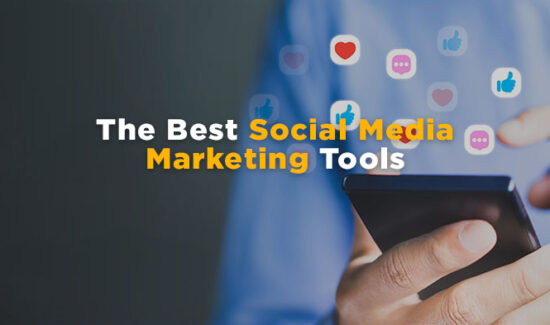Could There be an Unprofitable Tech Company Lurking Inside Your Consumer Brand?


As part of Solutions Review’s Contributed Content Series—a collection of articles written by industry thought leaders in maturing software categories—Dan LeBlanc, the CEO and co-founder of Daasity, explores the idea that an unprofitable tech company might be hiding in your consumer brand.
Consumer brands exist in a tricky limbo right now. Key statistics reveal that e-commerce has become a massive, churning, and complex juggernaut: On the one hand, the global e-commerce market is expected to hit $6.3 trillion this year and grow to $8.1 trillion by 2026, with the U.S. share reaching over $1.1 trillion in 2023. About 16.4 percent of U.S. retail purchases will take place online this year, and 20.8 percent will do so globally, with a trajectory of strong annual growth.
On the other hand, the online shopping cart abandonment rate on mobile devices is an eye-opening 84 percent. On desktops, it’s 72 percent. That tells us an intuitive, fast, and obstacle-free shopping experience—aligned with a better understanding of what different kinds of customers value most—is more important than ever for consumer brands.
Brands Face Changing Business Pressures and Turbulent Economic Conditions
But there’s much more happening under the surface that’s impacting consumer brand success. Venture capital has contracted, with firms becoming more conservative and scrutinizing the operations and profitability of their investments more closely. In contrast to the mountain of money available via venture capital in recent years, The Wall Street Journal recently reported that U.S. venture deals done in Q4 of 2022 dropped by 38 percent compared with the same period in 2021. And for the late-stage venture market, public market volatility often informs its course. A rough ride now, to be sure.
What’s more, investors and business leaders are finally coming to terms with the hard truth that customer growth does not ensure profitable growth. Until about a year ago, the foremost business pressure on CEOs in the VC-backed realm was to grow the company’s customer base and grow sales as a top priority. Now, growth is not enough. In fact, it’s okay to have some negative growth if you drop unprofitable customers. Nobody would have said this 12 months ago.
Now, for SaaS companies, consumer sector or otherwise, making money is the bottom line. The market’s gone from an exuberant willingness to put customer acquisition first to a hard reset that does not suffer losing money in order to acquire customers or retain them. And consumer brands cannot ignore marketing and logistics costs, order contribution margin, or customer lifetime value (CLV). All strategies must be profitable.
Macroeconomic factors and world events continue to impact brands as well. As the pandemic ended and retail stores reopened to mixed results, as inflation has swelled globally, including in China, as layoffs continue but job growth, at the same time, remains positive, as the ongoing war in Ukraine threatens Europe itself, and as generational “black swan” events seem to be occurring with much greater frequency, companies with initially high valuations have faced perilous devaluation.
Technology Strategy Impacts Profitability—And Consumer Brands Must Pivot
As a result of these business pressures and the acute push toward profitability, consumer brands are intensely focused on their expenses—exactly how much they’re spending and for what kinds of resources and services. Concurrently, in today’s digitized reality, brands know they must leverage data smartly to compete.
The “data basics” for brands are quite similar. A company needs to know how much of what it is selling—how many and what kinds of items are in each basket. What’s the average order value? How much is the company spending to fulfill each order? How many people are getting to the site? How many are clicking to buy, when, and under what circumstances? How much are they spending on average? How much did it cost me to get those customers in the door? How many people came back and bought a second time, a third time? What are the salient characteristics of their profiles? And more. Regardless of scale—a hobby business earning a thousand dollars monthly or a billion-dollar retail powerhouse—these are questions that must be answered with reliable data.
To do that and use data as an advantage, many consumer brands hired a slew of tech personnel in recent years and have inadvertently created tech companies within their business—operating to some extent with their own set of rules, ostensibly honoring business goals, but not enough in practice. The data technologies a consumer brand actually needs to be profitable are mature and available. Most brands don’t need a highly customized backend, nor do they need to spend a million dollars a year on building a slightly tweaked version of a technology that already exists—because the technical team decided it was more interesting to do so or that they could create marginal or theoretical value from doing so.
Business teams and even leadership tend to listen to the tech shop’s assessment regarding how to build and power the product, but motivations can be seriously misaligned. It happens all the time. Most engineers and developers love technology for its own sake and want to build a proverbial Ferrari or Bond car when what’s needed is a reliable, workhorse sedan.
This disconnect between business goals and a tech department’s priorities can be tough to face within a company. But brands must do so, pivot, and focus on their core business. Brands need things to be simpler and to work faster. They need to put the car in gear and go, not spin out financially with all that Ferrari power and a failing balance sheet. Despite being sold on the idea, they don’t need complicated, big systems to do immensely advanced analytics that does not have an adequate impact on the bottom line.
The caveat? If you’re a consumer brand generating $300+ million a year, the power of building more advanced applications and customized analytics for your retail operation becomes much more useful. But if you’re not at that scale, saving 0.1 percent in marketing or logistics—while spending exponentially that on engineering resources—makes no sense at a time when profitability is the raison d’être for investors.
Ignore FOMO with the Cutting Edge and Consider Verticalization Instead
For many consumer brand leaders, there’s a certain “fear of missing out” around technology, around not being cutting edge and leveraging the newest AI-driven tools. In their heads, they hear Microsoft’s CEO and others repeat the famous mantra: all companies are software companies. But that mantra really means companies need to leverage appropriate technologies to be profitable—not every souped-up new engine. It’s money-wasting folly to think the consumer sector should be technology’s first movers. Tech companies and data stack developers should be the first movers, not retailers. E-commerce benefits from proven technology, not needless tech overhead.
So, the strategic sweet spot is having tried-and-true data technology that doesn’t require heavy engineering lifts and that data or business analysts can readily use. You want a straightforward, reliable, and fast ride that can be easily upgraded to the Ferrari later in time when the size and needs of the business genuinely justify it. Look at the facts. Data lives in many different places.
A consumer brand needs connectors, easily plugged in, and automate the flow of all data from all sources for fast, accurate, and actionable analyses. This shouldn’t cost brands mountains of money. Most retail businesses shouldn’t have to hire a team of data engineers. They should focus on where their goods are being manufactured and whether they are showing up on time, whether inventory is in stock, whether the supply chain and reverse supply chain are functioning smoothly, and saving the company money. The latest database, cloud service, or cutting-edge developer tool won’t generally help solve those problems.
What is useful for consumer brands is adopting a system that’s purpose-built for commerce, with all the elements and flexibility of the modern data stack available in a single, easy-to-use platform. Beyond retail, the same is true for other verticals. In the coming years, expect to see more verticalization of data stacks and analysis packaged into platforms. That’s how customization will manifest, serving the specific data needs of each vertical.
CFOs, faced with today’s economic reckoning, are taking a hard look at all expenses and operations and asking: Why are we building all of this tooling ourselves rather than using platforms on the market that solve the real business needs? Customizations and in-house applications only add a little bit of value but cost a tremendous amount of resources and are no longer sustainable. If customizations and expanded technical teams aren’t going to yield big profitability, don’t spend the money.
Spend money on marketing and improving the customer experience. Use off-the-shelf tools at a fraction of the cost of building the perfect beast. Because there’s no question, the perfect beast will just consume you.























